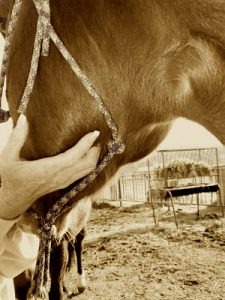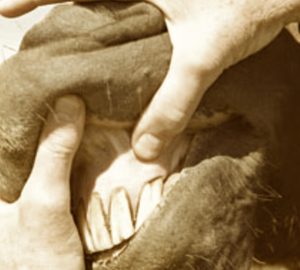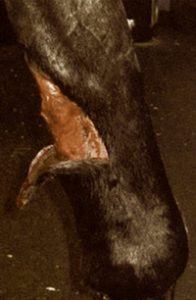 Years ago, I shared Canadian trainer, Lauren Fraser’s, equine field emergency to Cayuse Communications readers. It provided such fun and valuable information that it ended up in my book, A Rider’s Reader. Aside from a fully stocked first aid kit, she reminded readers facing an emergency to:
Years ago, I shared Canadian trainer, Lauren Fraser’s, equine field emergency to Cayuse Communications readers. It provided such fun and valuable information that it ended up in my book, A Rider’s Reader. Aside from a fully stocked first aid kit, she reminded readers facing an emergency to:
- Stop. Breathe. Assess the situation. Proceed calmly. Horses pick up on our emotional state, and a frightened prey animal doesn’t respond well to a frightened predator trying to grab, move, palpate, etc.
- Take a horse specific first aid course and build a first aid kit. These actions and purchases are not expensive and could save your horse’s life.
- Having a hay string and a knife on you at all times isn’t such a bad thing.
Thanks, Lauren!
Here are horse emergency skills you should absolutely feel comfortable performing. Practice before your emergency. You’ll be glad you did (and so will your horse). Read about Equine First Aid Kits here.

Taking a pulse. Image courtesy of Horse & Rider
Take heart rate (with stethoscope)
Take digital pulse (in limbs or elsewhere)
Take respiration count (per minute)
Take rectal temperature
Assess capillary refill time
Read more about these health signs here.
Sometimes horses don’t spell things out. Lacerations are obvious. But a colic or a hoof abscess? What ails them may initially elude us. We just know they are off. But we can rely on keen observations to help draw conclusions. The better our observations, the quicker and more accurately we can help.
Before you dial the vet, have to following information ready to share:
- temperature
- respiration
- heart rate
- membrane color (and capillary refill time)
- gut sounds
- whether the horse is drinking, eating, and pooping.

Capillary refill. Photo courtesy of Jennifer Paulson
Some observational tips of possibly urgent situation:
— If a horse seems to be in distress, his elevated heart rate can be an excellent pain level indicator.
— If a horse is colicking, his breath will often stink.
— The Walk-a-Colicking-Horse rule often doesn’t apply. Don’t worry too much if a horse is lying down. Just don’t let him twist and thrash.
— Symmetry is important in assessing lameness. Don’t just take the digital pulse of one foot. Take all four for comparison.

Laceration
— If you suspect an abscess, use ONE finger and run it along the coronet band of the hoof (also the hair line). Press and check for your horse’s reaction to the pressure. Then smell your finger. Often you won’t see a tiny droplet of discharge, but you sure will smell it!
— Your horse won’t likely bleed to death from a laceration. Horses can bleed a lot. Owners can freak out. Lacerations also may not need sutures. Sometimes, sutures can be more trouble than they’re worth, since they may keep in infection.